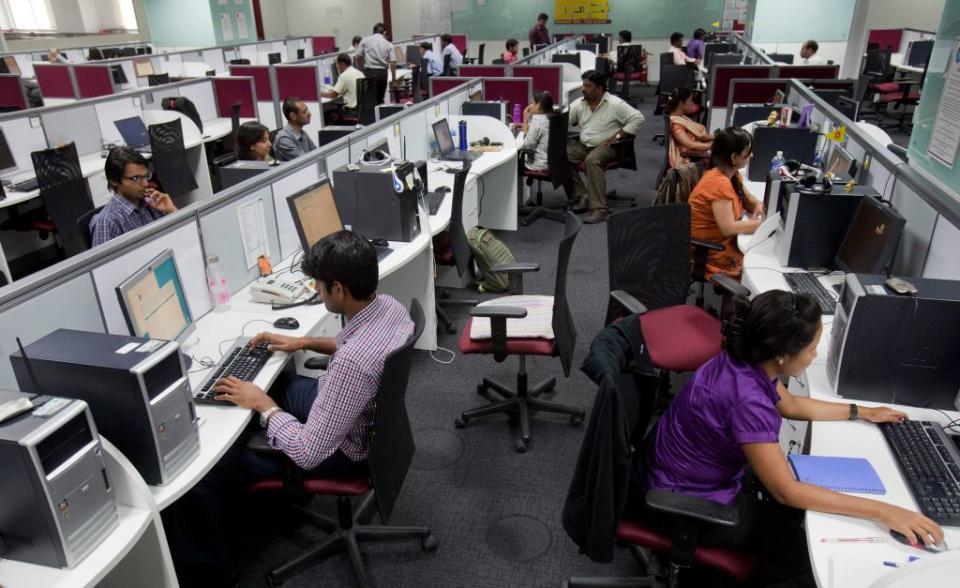This year, the H-1B visa will find fewer takers among India’s big IT companies

The number of hoops companies have to jump through to bring foreign workers into the US is only growing under the Trump administration. And Indian IT firms are no longer up for the hassle.
The pool of applicants for H-1B visas has been churned. Indian outsourcing companies are now scaling back while San Francisco Bay Area tech companies hire more foreign talent, according to a San Francisco Chronicle analysis of Department of Labour (DoL) data from 2015 to 2017.
In absolute terms, Indian IT behemoths like Infosys and Tata Consultancy Services (TCS) still submit tens of thousands of labor condition applications (LCA)—filed by companies seeking to hire someone on an H-1B visa—compared to Silicon Valley companies, which submit a few thousand. But Bay Area firms are upping their usage of the foreign-worker program drastically.
Tesla applied for 200% more H-1B workers in 2017 than in 2015. “The rise in requests appears to match growing workforces,” the Chronicle writes. “Tesla, for example, had 40,000 employees in 2017, up from 13,000 in 2015.”

Applications do not map one-for-one into the number of visas requested. More than one LCA can be issued for a single position if the visa holder will work in more than one geographic location. And one LCA could be filed for multiple positions. Still, LCAs are a reliable measure of H-1B visa applicants in the country.
Why Indian companies are H-1B shy
Silicon Valley faces severe skill shortages it can plug by bringing in talent from abroad. “Every reputable data source in the US has documented a growing shortfall between the supply and demand for computer science majors in the US workforce, especially in cutting-edge fields such as cloud, big data, and mobile computing,” Indian IT trade association Nasscom said in April last year.
Still, Indian companies are slowly distancing themselves from the H-1B program because they are faced with added scrutiny under the current administration. In March last year, the US Citizenship and Immigration Services (USCIS) said that (pdf) “an entry-level computer programmer position would not generally qualify as a position in a specialty occupation.” This represents a crippling shift, as Indian companies like MindTree and Infosys hire thousands of entry-level engineers.
This season as a definitive test
The US also announced a crackdown on H-1B visa frauds and abuses, including targeted visits to workplaces, and eliminated faster processing times two years in a row.
“The Indian IT industry already began a contraction in H-1B applications during last year’s cap season,” Leon Rodriguez, partner with Seyfarther Shaw LLP in Washington DC, told Quartz. “While it coincides with increasing hurdles to H-1B approval, above all for H-1B-dependent companies, there are also indications that this represents a maturation of companys’ workforces and an accompanying reduction in need for visa workers,” he said. Indian IT firms have been preparing for such changes with local hiring, automation, and remote services for nearly a decade now.
Rodriguez predicts the decline in filings will continue this year, adding that “what happens this cap season will be the most definitive test of how the changed regulatory environment in the US has affected this sector.”
The changing visa norms are already creating a chilling effect. Eighty percent of the 1,000-plus clients for global immigration platform Envoy said that the immigration system has impacted their talent management strategies. In addition, 22% of firms are moving work overseas. “We noticed India increased dramatically in immigration trends for global and outbound immigration, especially in the tech sector,” Envoy CEO Richard Burke said. Canada and other places that offer more security are fast becoming favourites among Indian talent anyway.
Read next: All the obstacles standing between Indian techies and their prized H-1B visa
Sign up for the Quartz Daily Brief, our free daily newsletter with the world’s most important and interesting news.
More stories from Quartz:

 Yahoo Finance
Yahoo Finance 